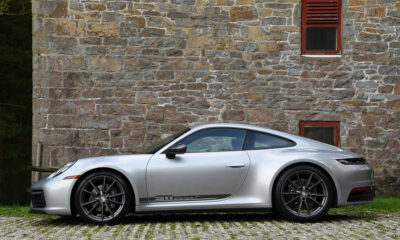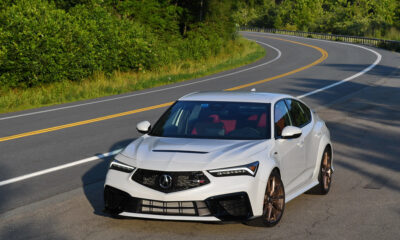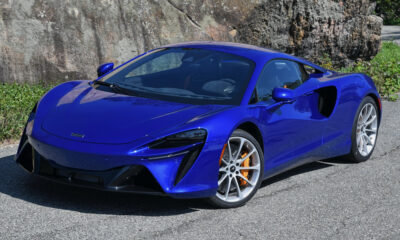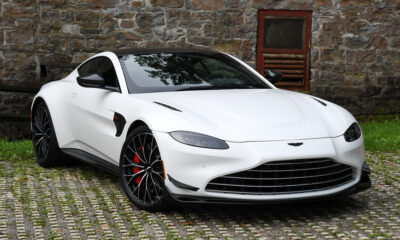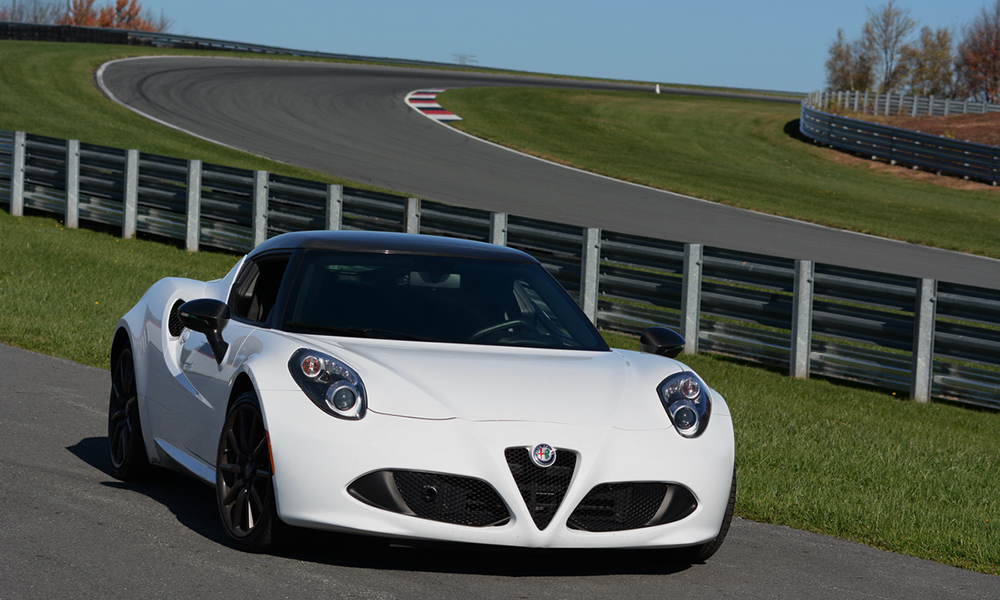
Photo: David Haueter
It’s a simple fact that humans are becoming a less important part of the equation in the role of driving.
With technology advancements to keep cars in the right lane, at the right speed and at the right distance from other cars, humans have a diminished role in driving decisions that once used to be crucial.
Technology to improve safety is certainly a good thing, but it’s also having the effect of dumbing down the driver. Even today’s modern sports cars and sedans are guilty of reducing the drivers role, but there are still a few rare cars out there that deliver a pure and unfiltered connection between the driver, the car and the road, cars like the Alfa Romeo 4C.
Alfa Romeo has been in the automotive news a lot lately, mainly because of the success of the Giulia sports sedan, which has become a serious contender to heavy hitters in the category that used to be dominated by BMW, Mercedes and Audi.
The Giulia is by most accounts a great car, but the 4C is the model that has the closest spiritual link to the great Alfa Romeo’s of the past that were just as effective on a track as they were on a twisty back road.
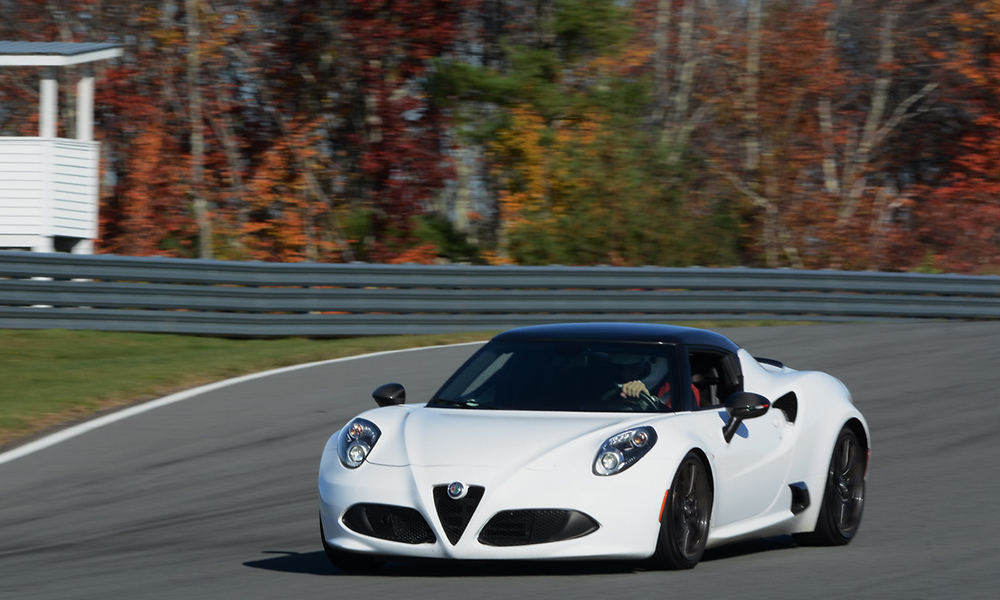
Photo: Bill Dermody
You don’t have to drive the 4C to understand what this car is made for – all you have to do is look at it.
It looks purposeful, fast and exotic, like those other mostly red cars that come out of Modena, Italy and are a lot more expensive. A closer look reveals the type of design and construction that’s more typical of race cars than street cars, with a carbon fiber tub (that has the front and rear subframes bolted directly to it), floor mounted pedals, hip-hugging seats, and simple leather straps for door pulls. It doesn’t even have power-assisted steering.
The carbon tub weighs just 236 pounds and is not the only design feature that reduces weight. The body is made from sheet-molded composite that’s 20 percent lighter than steel and even the window glass is 10 percent thinner to reduce weight.
Overall, the 4C coupe weighs in at just 2,465 pounds, which is almost the same weight as the Mazda MX-5 RF.
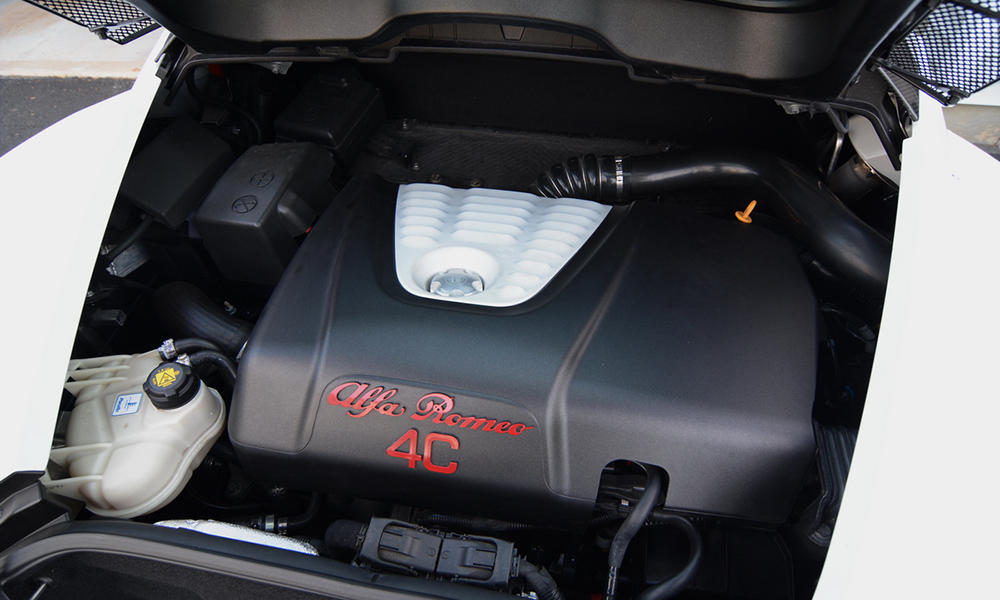
Photo: David Haueter
The 4C looks so fast that it’s almost a surprise when you find out it only has 237 horsepower and 258 foot-pounds of torque coming from its 1.7-liter turbocharged inline 4-cylinder, which is mounted transversely ahead of the rear axle.
The light weight of the 4C is a big reason the car can get from 0-60mph in 4.1 seconds. A six-speed twin clutch automatic with paddle shifters is the only transmission that’s available, and Brembo brakes are standard (with 12-inch rotors up front and 11.5-inch at the rear).
For its handling prowess, the 4C relies on a double-wishbone front suspension with a tubular anti-roll bar and a MacPherson strut rear suspension with side-load springs.
There’s no shift lever mounted on the center console of the 4C, but rather a set of buttons that are pushed to select first gear (to get moving), reverse, and automatic or manual shifting.
Manual shifting is only accomplished through use of the paddle shifters on the steering wheel but the car also has an auto mode that comes in handy when driving around town or in traffic.
There’s also a “DNA Pro Drive Mode Selector” lever on the center console that allows the driver to choose between All-Weather, Natural, Dynamic and Race modes, which vary the level of intervention from the traction control and adjusts the responsiveness of the throttle and gear changes.
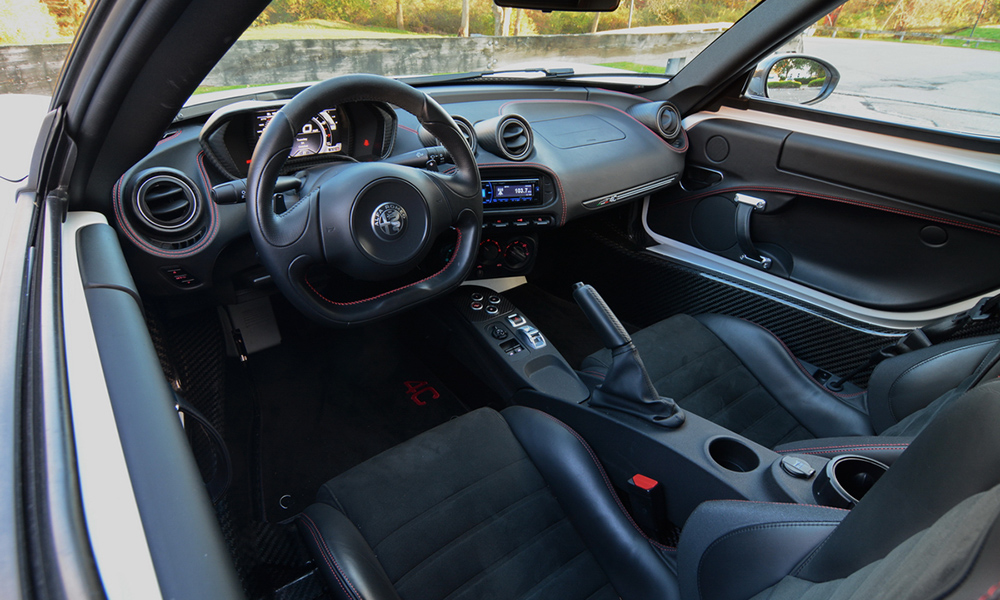
Photo: David Haueter
The Alfa Romeo 4C lives up to its appearance when you get behind the wheel. You feel like you’re getting into a race car when you slide over the carbon fiber sill and into the seat and it sounds like a race car when you fire it up, as there’s little if anything in the way of sound deadening to take away from the experience.
The cockpit feels so focused that the stereo system seems very out of place and the engine noise is so loud that it renders the stereo almost completely useless.
Our test car had the optional sport-tuned dual exhaust, so maybe it’s a bit quieter with the standard exhaust.
The 4C is so much like a race car that you’ll have to compromise if you plan to use it for anything but fun. There’s no storage in the cockpit, not even a glovebox, and the small trunk can’t fit much more than one small bag.
It takes some effort to get in and out of, and the lack of power assisted steering can make it a real handful when you’re driving at slow speeds around a parking lot or trying to back out of a space.
Ride quality is also firm and can get downright uncomfortable on a rough road, which may have been exacerbated in our test car which had the optional $2,300 Track Package that includes a race-tuned suspension.

Photo: Bill Dermody
Get the 4C out on a smooth, twisty road or race track, however, and it makes its purpose known, which is all about having fun behind the wheel. With the low ride height and short hood, you’re in intimate contact with the road in front of you.
Besides a little too much play on center, the steering lightens up and gets more direct as speeds rise. The 4C was very engaging to drive at Monticello Motor Club, with plenty of power from the turbocharged inline-four to pull out of corners and hurtle through the tracks high-speed sweepers.
Handling is quick and responsive, though the car does tend to get sidetracked by road imperfections on public roads.
There’s little in the way of body roll and just a touch of understeer on the entry to corners. The seats hold you securely in place at track speeds and the Brembo brakes are excellent, with good pedal feel and stopping power.
The transmission also works well enough, though it didn’t feel as quick as similar transmissions in other sports cars from BMW and Porsche.
The bottom line is that the Alfa Romeo 4C is all about purity of driving. This is a car with no filters and because of that it won’t be on the short list for most drivers.
It’s certainly not a car designed for daily driving or stop-and-go traffic. It eschews creature comforts and practicality for a raw driving experience and rewards drivers who want a car that fully involves them and brings them completely into the driving experience.
I for one am glad it exists. The Alfa Romeo 4C coupe starts at $55,900 and the Spider version at $65,900.



















